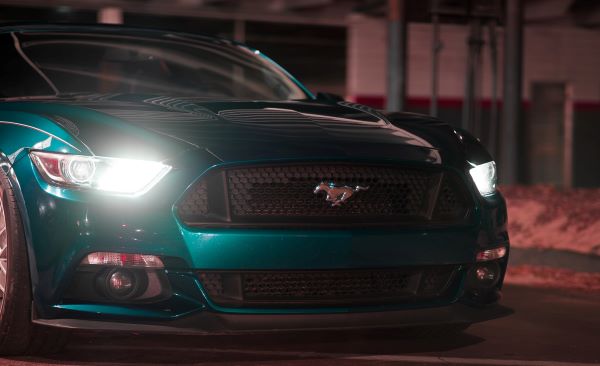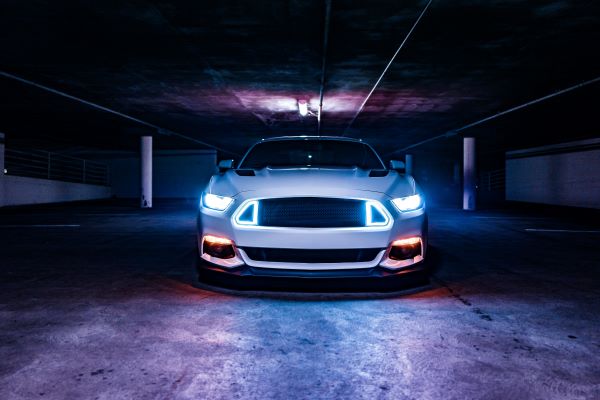Perfect driving even at night
When it comes to LEDs, many people associate them with robots and other futuristic technologies, but the truth is that LED lights are being used every day in more and more occasions and places. They are used to illuminate our homes and offices and are also used in our cars. While it is true that LEDs are usually present in luxury car brands, the trend is spreading to always include them as factory accessories. And there is a good reason why LED car lights are becoming more and more popular.
Table of Contents
Why are car LED bulbs so important?
It may seem obvious why your headlights are critical to your driving experience – they light things up at night. 40% of traffic takes place in the dark and this is the first, important reason why it is good to have LED bulbs for cars. But what are the different factors that make up the details of a lighthouse?

Well, one of the most obvious is brightness. We’ll cover brightness and which bulbs are the brightest below, but for now be aware that brightness isn’t the only factor at play.
Another extremely important factor is the color of the light. Sometimes this is referred to as the temperature of the light. The cooler colors are more blue, while the warmer colors are more yellow-red. For comparison, cool colors can often look artificial and flat or shallow, while warm colors are more vibrant. A lit match, for example, produces a very warm color, while an LCD screen produces a very cool color.
Another very important factor is the range of the headlights. This is the distance the light will travel from the lighthouse. In some of the luxury cars, the launch is automated and influenced by factors such as how fast you are driving. So, when you drive faster, the headlights shine farther.
Most headlights, however, have a fixed range.

Not just LED bulbs: three types of headlights
There are three types of headlights currently used in automobile headlights. The oldest and most widespread is the simple halogen light. A halogen works the same way as incandescent bulbs that light up most people’s homes.
Halogens are the classic method and are readily available, easy to add to the car design and very affordable. However, just like any old standard, they have some drawbacks. This is why other types of light bulbs were developed in the first place. For example, a HID or high intensity discharge bulb. These have some of the advantages of LEDs but are not that popular. This is partly due to their artificial and unattractive light, among other reasons. The third type, as you can probably imagine, are LED car bulbs. Of course, these have a lot of advantages and just a few minor drawbacks.

What exactly are LED car bulbs
Before we get into the details of the pros and cons, you may want to know a little more about LEDs.
LED stands for Light-Emitting Diode. According to the definition: “a diode is a two-terminal electronic component that conducts current mainly in one direction”. Put simply, a diode is a device that allows an electric current to flow in one direction. It just happens that in certain types of diodes made of certain types of materials photons (or particles of light) appear. LEDs work the same way as regular halogen and incandescent bulbs. But in this case, instead of a metal filament, the electric current is passed through a diode that emits light. However, an LED is not a single diode like a light bulb is a single light bulb, rather, an LED is a series of arranged diodes.
Pros of car LED bulbs
Lifetime: Good quality LED products can have a lifespan of 20,000 hours. It is 20 times longer than a halogen bulb.
Efficiency: Halogen bulbs not only produce light, they also produce a lot of heat. This is generally not a problem, but it does cause a waste of electricity. In other words, instead of all the electricity destined to produce light, some of it is burned as a by-product. LEDs, on the other hand, produce very little heat. This means they will use less electricity and consume less battery. 260 percent less exhaust to be exact.
Brightness: While generally not as bright as HID lights, LEDs are 275% brighter than halogens. In fact, most people think LEDs provide better color and visibility than halogens or HIDs.
Cons of LED car bulbs
As you’ve probably gathered, LEDs are a great energy-saving option for car headlights. So you may be wondering, why shouldn’t I use LEDs?
Price: Due to the novelty of technology and the relative complexity of the design, LEDs cost more than their halogen counterparts. However, due to the increase in popularity, LED headlights are becoming cheaper every year. Plus, thanks to their longer lifespan, LEDs can save you a lot of time and money in the long run.










